Sciences
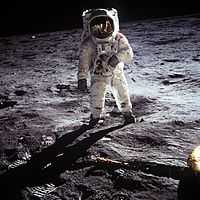
A systematically organized body of knowledge on a particular subject is often thought of as a science. The collection of such bodies of knowledge also systematically organized likely constitutes the sciences.
A more archaic meaning is knowledge of any kind whether found through the use of the scientific method or not.
Perhaps nothing symbolizes the sciences more than astronaut Buzz Aldrin, lunar module pilot, walking on the surface of the Moon near the leg of the Lunar Module (LM) "Eagle" during the Apollo 11 extravehicular activity (EVA). Astronaut Neil A. Armstrong, commander, took this photograph with a 70 mm lunar surface camera. While astronauts Armstrong and Aldrin descended in the Lunar Module (LM) "Eagle" to explore the Sea of Tranquility region of the Moon, astronaut Michael Collins, command module pilot, remained with the Command and Service Modules (CSM) "Columbia" in lunar orbit.
The sciences
Def. the disciplines or branches of learning, especially those "dealing with measurable or systematic principles ... the collective [disciplines] of study or learning acquired through the scientific method"[1] are called the sciences.
Def. in the definite "[a] method of discovering knowledge about the natural world based in making falsifiable predictions (hypotheses), testing them empirically, & developing theories that match known data from repeatable physical experimentation"[2] is called the scientific method.
Human conditions
"[I]t has been argued that the ultimate purpose of science is to make sense of human beings and our nature- for example in his book Consilience, EO Wilson said "The human condition is the most important frontier of the natural sciences."[3] Jeremy Griffith supports this view.[4]"[5]
Natural sciences
"The natural sciences are those branches of science that seek to elucidate the rules that govern the natural world through scientific methods.[6]"[7]
"Fundamentally, natural sciences are defined as disciplines that deal only with natural events (i.e., independent and dependent variables in nature) using scientific methods."[6]
"The term "natural science" is used to distinguish the subject from the social sciences, which apply the scientific method to study human behavior and social patterns; the humanities, which use a critical or analytical approach to study the human condition; and the formal sciences such as mathematics and logic, which use an a priori, as opposed to factual methodology to study formal systems."[7]
Astronomy

A nomy (Latin nomia) is a "system of laws governing or [the] sum of knowledge regarding a (specified) field."[8] Nomology is the "science of physical and logical laws."[8] When any effort to acquire a system of laws or knowledge focusing on an astr, aster, or astro, that is, any natural body in the sky especially at night,[8] succeeds even in its smallest measurement, astronomy is the name of the effort and the result.
Biology

Def. "[a] status given to any entity ... having the properties of replication and metabolism"[9] is called life.
Def. "the study of all life or living matter ... [including] the structure, function, and behavior of an organism or type of organism"[10] is called biology.
Botany is the study of plants, including their physiology, structure, genetics, ecology, distribution, classification, and economic importance.
Def. "that part of biology which relates to the animal kingdom, including the structure, embryology, evolution, classification, habits, and distribution of all animals, both living and extinct"[11] is called zoology.
Chemistry

Def. a "natural science that deals with the composition and constitution of substances and the changes that they undergo as a consequence of alterations in the constitution of their molecules"[12] is called chemistry.
Def. a science that deals with
- the identification of the substances of which matter is composed,
- the investigation of their properties and the ways in which they interact, combine, and change, and
- the use of these processes to form new substances
is called chemistry.
Def. "a science that deals with the composition, structure, and properties of substances and of the transformations that they undergo"[8] is called chemistry.
"Chemistry is the science of matter, especially its chemical reactions, but also its composition, structure and properties.[13][14] Chemistry is concerned with atoms and their interactions with other atoms, and particularly with the properties of chemical bonds."[15]
Materials sciences
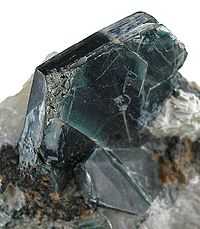
"Materials science is an interdisciplinary field applying the properties of matter to various areas of science and engineering."[16]
Def. an understanding of the nature of substances whose properties make them useful in structures, machines, devices, or products, leading to theories or descriptions that explain how structure relates to composition, properties, and behavior is called materials science.
Physics
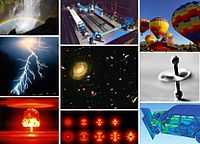
Def. the nature and properties of "matter and energy and their interactions"[8] is called physics.
Many of the early laws begin to make sense and increase understanding of the phenomena observed when coupled to experimental and theoretical studies performed in a laboratory here on Earth under controlled conditions.
"Standard condition for temperature and pressure are standard sets of conditions for experimental measurements established to allow comparisons to be made between different sets of data. The most used standards are those of the International Union of Pure and Applied Chemistry (IUPAC) and the National Institute of Standards and Technology (NIST), although these are not universally accepted standards. Other organizations have established a variety of alternative definitions for their standard reference conditions."[17]
Earth science
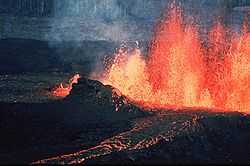
"Earth science is an all-embracing term for the sciences related to the planet Earth.[18] It is arguably a special case in planetary science"[19].
Def. the intellectual and practical activity encompassing the systematic study through observation and experiment of the Earth's physical structure and substance, its history and origin, and the processes that act on it, especially by examination of its rocks, is called geology.
The Earth is a rocky object whose surface is mostly covered with water that is in orbit around a star called the Sun.
Geology

At its earliest, geology is the study of the rocks that compose the astronomical rocky object referred to as the Earth.
Atmospheric sciences
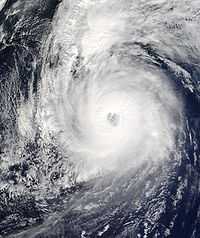
"Atmospheric sciences is an umbrella term for the study of the [Earth's atmosphere] atmosphere, its processes, the effects other systems have on the atmosphere, and the effects of the atmosphere on these other systems."[20]
Def. "[t]he gases surrounding ... any astronomical body"[21] are called an atmosphere.
Def. "the study of the atmosphere and its phenomena, especially with weather and weather forecasting"[22] is called meteorology.
Def. "precipitation products of the condensation of atmospheric water vapour"[23] are called hydrometeors.
"Condensation or sublimation of atmospheric water vapor produces a hydrometeor. It forms in the free atmosphere, or at the earth's surface, and includes frozen water lifted by the wind. Hydrometeors which can cause a surface visibility reduction, generally fall into one of the following two categories:
- Precipitation. Precipitation includes all forms of water particles, both liquid and solid, which fall from the atmosphere and reach the ground; these include: liquid precipitation (drizzle and rain), freezing precipitation (freezing drizzle and freezing rain), and solid (frozen) precipitation (ice pellets, hail, snow, snow pellets, snow grains, and ice crystals).
- Suspended (Liquid or Solid) Water Particles. Liquid or solid water particles that form and remain suspended in the air (damp haze, cloud, fog, ice fog, and mist), as well as liquid or solid water particles that are lifted by the wind from the earth’s surface (drifting snow, blowing snow, blowing spray) cause restrictions to visibility. One of the more unusual causes of reduced visibility due to suspended water/ice particles is whiteout, while the most common cause is fog."[24]
Oceanography
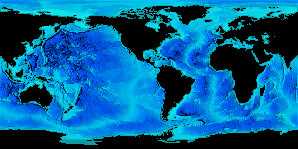
"Oceanography..., also called oceanology or marine science, ... studies the ocean. It covers a wide range of topics, including marine organisms and ecosystem dynamics; ocean currents, waves, and geophysical fluid dynamics; plate tectonics and the geology of the sea floor; and fluxes of various chemical substances and physical properties within the ocean and across its boundaries."[25]
Theoretical sciences
Def. the practice of training people to obey rules or a code of behavior, using punishment to correct disobedience is called discipline.
Def. the controlled behavior resulting from such training as mentioned just above is called discipline.
Def. an activity or experience that provides mental or physical training is called a discipline.
Def.
- a "particular discipline or branch of learning, especially one dealing with measurable or systematic principles rather than intuition or natural ability"[1] or
- a "collective discipline of study or learning acquired through the scientific method; the sum of knowledge gained from such methods and discipline"[1]
is called science.
The best way to ruin a potentially capable scientist is to require discipline.
Def. the intellectual and practical activity encompassing the systematic study of the structure and behavior of the physical and natural world through observation and experiment is called science.
Def. a systematically organized body of knowledge on a particular subject is called science.
Research
Hypothesis:
- The sciences do not need to follow the humanities, religion, or the arts to be beneficial to humanity.
Control groups

The findings demonstrate a statistically systematic change from the status quo or the control group.
“In the design of experiments, treatments [or special properties or characteristics] are applied to [or observed in] experimental units in the treatment group(s).[26] In comparative experiments, members of the complementary group, the control group, receive either no treatment or a standard treatment.[27]"[28]
Proof of concept
Def. a “short and/or incomplete realization of a certain method or idea to demonstrate its feasibility"[29] is called a proof of concept.
Def. evidence that demonstrates that a concept is possible is called proof of concept.
The proof-of-concept structure consists of
- background,
- procedures,
- findings, and
- interpretation.[30]
See also
References
- 1 2 3 "science, In: Wiktionary". San Francisco, California: Wikimedia Foundation, Inc. February 15, 2013. Retrieved 2013-02-19.
- ↑ "scientific method, In: Wiktionary". San Francisco, California: Wikimedia Foundation, Inc. December 27, 2012. Retrieved 2013-02-19.
- ↑ Wilson, EO. 1998. Consilience: The unity of knowledge. New York. Alfred A. Knopf. p334
- ↑ Griffith J. 2011. What is Science?. In The Book of Real Answers to Everything!, ISBN 9781741290073. http://www.worldtransformation.com/what-is-science/ accessed November 20, 2012.
- ↑ "Science, In: Wikipedia". San Francisco, California: Wikimedia Foundation, Inc. February 20, 2013. Retrieved 2013-02-26.
- 1 2 Stephen F. Ledoux (2002). "Defining Natural Sciences" (PDF). Behaviorology Today 5 (1): 34. http://behaviorology.org/pdf/DefineNatlSciences.pdf.
- 1 2 "Natural science, In: Wikipedia". San Francisco, California: Wikimedia Foundation, Inc. February 22, 2013. Retrieved 2013-02-26.
- 1 2 3 4 5 Philip B. Gove, ed (1963). Webster's Seventh New Collegiate Dictionary. Springfield, Massachusetts: G. & C. Merriam Company. pp. 1221.
- ↑ "life, In: Wiktionary". San Francisco, California: Wikimedia Foundation, Inc. January 13, 2013. Retrieved 2013-02-27.
- ↑ "biology, In: Wiktionary". San Francisco, California: Wikimedia Foundation, Inc. February 18, 2013. Retrieved 2013-02-27.
- ↑ "zoology, In: Wiktionary". San Francisco, California: Wikimedia Foundation, Inc. February 12, 2013. Retrieved 2013-02-27.
- ↑ "chemistry, In: Wiktionary". San Francisco, California: Wikimedia Foundation, Inc. May 13, 2012. Retrieved 2012-07-12.
- ↑ "What is Chemistry?". Chemweb.ucc.ie. Retrieved 2011-06-12.
- ↑ Chemistry. (n.d.). Merriam-Webster's Medical Dictionary. Retrieved August 19, 2007.
- ↑ "Chemistry, In: Wikipedia". San Francisco, California: Wikimedia Foundation, Inc. June 27, 2012. Retrieved 2012-07-15.
- ↑ "Materials science, In: Wikipedia". San Francisco, California: Wikimedia Foundation, Inc. May 19, 2012. Retrieved 2012-05-22.
- ↑ "Standard conditions for temperature and pressure, In: Wikipedia". San Francisco, California: Wikimedia Foundation, Inc. June 16, 2012. Retrieved 2012-06-16.
- ↑ "earth science". Memidex/WordNet Dictionary. Retrieved 2012-06-11.
- ↑ "Earth science, In: Wikipedia". San Francisco, California: Wikimedia Foundation, Inc. February 27, 2013. Retrieved 2013-02-27.
- ↑ "Atmospheric sciences, In: Wikipedia". San Francisco, California: Wikimedia Foundation, Inc. April 23, 2012. Retrieved 2012-05-22.
- ↑ "atmosphere, In: Wiktionary". San Francisco, California: Wikimedia Foundation, Inc. February 21, 2013. Retrieved 2013-02-21.
- ↑ "meteorology, In: Wiktionary". San Francisco, California: Wikimedia Foundation, Inc. January 22, 2013. Retrieved 2013-02-15.
- ↑ "hydrometeor, In: Wiktionary". San Francisco, California: Wikimedia Foundation, Inc. July 7, 2012. Retrieved 2013-02-15.
- ↑ Mark R. Mireles, Kirth L. Pederson, Charles H. Elford (February 21, 2007). Meteorologial Techniques. 106 Peacekeeper Drive, Suite 2N3, Offutt Air Force Base, Nebraska USA: Air Force Weather Agency/DNT. http://oai.dtic.mil/oai/oai?verb=getRecord&metadataPrefix=html&identifier=ADA466107. Retrieved 2013-02-17.
- ↑ "Oceanography, In: Wikipedia". San Francisco, California: Wikimedia Foundation, Inc. April 22, 2012. Retrieved 2012-05-23.
- ↑ Klaus Hinkelmann, Oscar Kempthorne (2008). Design and Analysis of Experiments, Volume I: Introduction to Experimental Design (2nd ed.). Wiley. ISBN 978-0-471-72756-9. http://books.google.com/?id=T3wWj2kVYZgC&printsec=frontcover.
- ↑ R. A. Bailey (2008). Design of comparative experiments. Cambridge University Press. ISBN 978-0-521-68357-9. http://www.cambridge.org/uk/catalogue/catalogue.asp?isbn=9780521683579.
- ↑ "Treatment and control groups, In: Wikipedia". San Francisco, California: Wikimedia Foundation, Inc. May 18, 2012. Retrieved 2012-05-31.
- ↑ "proof of concept, In: Wiktionary". San Francisco, California: Wikimedia Foundation, Inc. November 10, 2012. Retrieved 2013-01-13.
- ↑ Ginger Lehrman and Ian B Hogue, Sarah Palmer, Cheryl Jennings, Celsa A Spina, Ann Wiegand, Alan L Landay, Robert W Coombs, Douglas D Richman, John W Mellors, John M Coffin, Ronald J Bosch, David M Margolis (August 13, 2005). "Depletion of latent HIV-1 infection in vivo: a proof-of-concept study". Lancet 366 (9485): 549-55. doi:10.1016/S0140-6736(05)67098-5. http://www.ncbi.nlm.nih.gov/pmc/articles/PMC1894952/. Retrieved 2012-05-09.
External links
- African Journals Online
- Bing Advanced search
- Google Books
- Google scholar Advanced Scholar Search
- JSTOR
- Lycos search
- NASA's National Space Science Data Center
- NCBI All Databases Search
- Office of Scientific & Technical Information
- PsycNET
- PubChem Public Chemical Database
- Questia - The Online Library of Books and Journals
- SAGE journals online
- The SAO/NASA Astrophysics Data System
- Scirus for scientific information only advanced search
- SIMBAD Astronomical Database
- SIMBAD Web interface, Harvard alternate
- Spacecraft Query at NASA.
- SpringerLink
- Taylor & Francis Online
- WikiDoc The Living Textbook of Medicine
- Wiley Online Library Advanced Search
- Yahoo Advanced Web Search
| |||||||||||||||||||||||||||||||||||||||||||||||||||||
| ||||||||||||||||||||||||||||||||||||||
| |||||||||||||||||||||||||||||||||||
| |||||||||||||||||||||||||||||||||||
| |||||||||||||||||||||||||||||||||||||||||
| |||||||||||||||||||||||||||||||||||||||||
| ||||||||||||||||||||||||||||||||||||||
| ||||||||||||||||||||||||||||||||||||||
![]() This is a research project at http://en.wikiversity.org
This is a research project at http://en.wikiversity.org
| |
Development status: this resource is experimental in nature. |
| |
Educational level: this is a research resource. |
| |
Resource type: this resource is an article. |
| |
Resource type: this resource contains a lecture or lecture notes. |
| |
Subject classification: this is a science resource . |
| |
Subject classification: this is a semantics resource. |